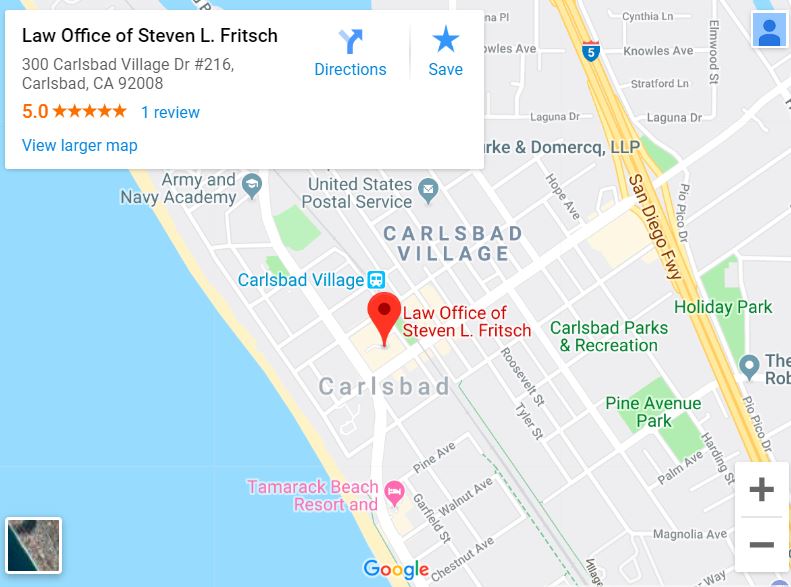In California, divorce and dissolution are treated differently in the legal realm. Unfortunately, the line may appear thin. While divorce and dissolution may seem similar at first, they’re entirely different when put into motion. Strictly speaking, divorce and dissolution are common in their termination of marriage. It is important to note, however, that both divorce and dissolution both encompass child custody, alimony, child support and marital property.
What Qualifies a Divorce?
 A divorce is filed when a complaint by a wife, husband or both is made in a local common please court’s domestic relations division. If no domestic relations division court exists, a divorce complaint can be filed in the area’s common pleas court’s general division. In all cases, a divorce complaint must be proven by securing legal grounds. Legal grounds for a divorce exist when at least one of the following occurs:
A divorce is filed when a complaint by a wife, husband or both is made in a local common please court’s domestic relations division. If no domestic relations division court exists, a divorce complaint can be filed in the area’s common pleas court’s general division. In all cases, a divorce complaint must be proven by securing legal grounds. Legal grounds for a divorce exist when at least one of the following occurs:
- Adultery
- Cruelty, abuse or violence
- Gross neglect of duty
- Imprisonment of other spouse
- Bigamy
Additionally, excessive drunkenness, incompatibility or a fraudulent contract are grounds for divorce. While areas surrounding divorce are sometimes ambiguous, divorce complaints are usually viewed in great length to determine proof of legal grounds.
What Qualifies a Dissolution?
In California, obtaining a dissolution of marriage involves a husband and wife’s full agreement on every issue surrounding separation. Both a dissolution’s beginning and final hearing must be agreed upon by both parties. A dissolution is a “no-fault” divorce in which a written separation agreement filed in a court governs the case. A marriage dissolution requires the full disclosure of a partnership’s liabilities and assets.
In many cases, a dissolution is a very cost-effective type of divorce. If both parties are capable of working out every detail, including child support, property division, shared parenting and spousal support, a dissolution is rather easy to execute. Often quick to execute, a dissolution is a relatively painless way to undergo a divorce.
California Summary Dissolution
In the state of California, Summary Dissolution is an even easier way to end a marriage than a regular dissolution. To qualify for a Summary Dissolution, both spouses must meet several requirements.
Both spouses must have been married for at least five years. Additionally, a marriage’s wife must not be currently pregnant. Children adopted or born before the marriage’s time, too, may halt a Summary Dissolution. Both parties must not own real estate property, including rental properties, houses, land, condominiums or a one-year lease. In most cases, both spouses must have not acquired over $25,000 in property worth.
When a Summary Dissolution occurs, neither spouse can receive spousal support. Additionally, both spouses must agree to read and sign a Joint Petition while paying required court filing fees.
Joint Petition for Summary Dissolution
If either spouse has resided in California for at least six months, a joint petition for summary dissolution may be filed. A Joint Petition for Summary Dissolution “starts the clock” on proceedings, initiating the dissolution process. Along with a Joint Petition for Summary Dissolution, both parties must file any forms explained within their Summary Dissolution Information booklet. In the Joint Petition for Summary Dissolution packet, both parties must prove their marriage length, time of residency and other relevant information. The Superior Court of California contains the form here, and it should be accessed by any intending to undergo the process.
Accessing Summary Dissolution Forms
California spouses are urged to determine their eligibility for summary dissolution. Summary dissolution, again, is a far simpler way to get a divorce as a married couple or domestic partnership. The Superior Court of California contains the Summary Dissolution Information Booklet, which is accessible to any seeking a Summary Dissolution.
Married couples can determine their qualifications by viewing the Summary Dissolution Information Booklet, which provides a step-by-step guide to filing a marriage’s case. Worksheets, too, are provided to help both spouses meet legal requirements.
Domestic partners can qualify for a summary dissolution to end a registered partnership. In such cases, partners are urged to view the Summary Dissolution Information Booklet’s step-by-step guide in requesting a legal partnership end. It’s similarly helpful to discuss any and all options with your legal provider. In some cases, marriage or partnership dissolution may require extensive assistance to determine insurance policy options. In some cases, insurance company options may change for those undergoing dissolution. Always check with your provider about lawful options, and take great care when approaching either divorce or dissolution. If you have questions about how to move forward with a summary dissolution contact Steven Fritsch today for a free consultation.
